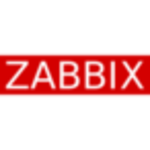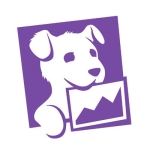What is our primary use case?
We were one of the first customers when Cribl launched. Around 10% to 20% of Cribl had already been implemented when I joined. My role involved expanding it to 100% of our incoming logs being processed through Cribl. Our primary use case was to collect logs from various cloud sources. We also planned to migrate and optimize our usage, as we now handle a significant volume, about 15 TB, with enterprise licensing.
Cribl played a crucial role in reducing costs and improving efficiency, though we’re still fully realizing those benefits. We have now implemented Cribl as our primary log collection endpoint. We use it alongside Splunk, aiming to reduce licensing costs while taking advantage of Cribl's streamlined log collection features.
Once Cribl is fully integrated, we plan to segregate data—moving less critical logs, like test and non-production logs, to open-source solutions to further reduce licensing costs. In our hybrid environment, with enterprise and open-source tools, Cribl has simplified the process. We've successfully used it to migrate our enterprise logs to the cloud, and this migration is ongoing. Cribl has been instrumental in ensuring that these changes do not disrupt our production systems and has made the migration between different log management tools, including Splunk and others like Microsoft Sentinel or Datadog, much smoother.
What is most valuable?
One of the main benefits is the simplified log collection from multiple sources. Cribl offers easy plugin configurations and source collection settings, allowing us to collect logs from any source. We can test by passing sample logs without needing a separate test environment, unlike in Splunk, where onboarding data requires a non-prod environment and multiple validations before moving to production. Cribl significantly reduces the time required by allowing us to upload samples, perform parsing and field extractions, and commit directly to production.
What needs improvement?
Cribl has simplified many aspects of the onboarding process, but there's still room for improvement. Currently, no other tools in the market truly compete with Cribl in its niche. Splunk is trying to retain customers by developing ingest actions to reduce licensing costs, hoping to prevent them from switching to Cribl.
There is no alerting mechanism for the leader/worker nodes status.
Since Cribl plays a major role in the mid-layer between the source and destination, there's a slight risk of losing data at some points while receiving real time data.
It would be helpful if Cribl could temporarily store or index the data for a specific time range. This would prevent data loss during downtime. Additionally, there's room for improvement in how Cribl handles historical data. Currently, I can't view trends beyond a week, and even then, it’s often limited to just 24 hours. Since Cribl doesn’t index the data but only forwards it, extending the period for viewing statistics and monitoring trends would be a valuable enhancement.
For how long have I used the solution?
I have been using Cribl for around two and a half years. We are using V4.1.2 of the solution.
Buyer's Guide
Cribl
October 2025
Learn what your peers think about Cribl. Get advice and tips from experienced pros sharing their opinions. Updated: October 2025.
872,778 professionals have used our research since 2012.
What do I think about the stability of the solution?
We've encountered some minor bugs, particularly in data parsing. However, these were quickly addressed in the next version. It is a stable product with ongoing development that reflects steady improvement.
What do I think about the scalability of the solution?
Ten members use this solution from both on-site and off-site.
How are customer service and support?
The support we've received over the last two years has been good. Whenever I've raised a case, they've addressed it based on the priority level and have been consistently supportive.
How would you rate customer service and support?
Which solution did I use previously and why did I switch?
Cribl can collect data from any source straightforwardly without disrupting the existing logging setup—minor changes are needed to point the logs to Cribl. One of the main reasons we adopted Cribl was to reduce our Splunk licensing costs, which has been very effective. The cost savings from using Cribl versus the reduced licensing fees for our enterprise setup are significant.
In the first implementation phase, we saw noticeable results in reduced licensing costs. As management pushed for further cost savings by incorporating open-source solutions, Cribl was crucial in ensuring a smooth transition. Whether migrating from one tool to another, splitting, or moving from enterprise to cloud, Cribl has made these transitions seamless.
How was the initial setup?
The initial setup with Cribl is much easier. Upgrading versions, especially in cloud environments, is almost a single-click process. Upgrading is also straightforward for on-premises setups—updating the leader node automatically distributes the upgrade to all worker groups and nodes. This makes upgrading, maintaining, and installing Cribl relatively simple compared to other tools.
Additionally, Cribl offers free training for users and administrators. The existing learning materials are comprehensive enough to support effective use and deployment.
What's my experience with pricing, setup cost, and licensing?
Compared to other enterprise solutions, Cribl tends to be more cost-effective. While other major players can be quite expensive, especially as data volumes increase over time, Cribl offers a fair pricing model. As organizations continue to generate larger amounts of data daily, it's important for large enterprise solutions to reconsider their pricing structures and potentially offer better deals for larger data needs. Cribl is not the cheapest option but provides good value, given its scalability and efficiency.
What other advice do I have?
The first thing to consider is the amount of data you're dealing with. Cribl is particularly beneficial for large-scale data environments. It allows you to process and store data efficiently, similar to how Splunk uses summary indexes. For example, when pulling raw events into Splunk, we often extract relevant logs using data models to simplify the data. Cribl enables a similar approach by letting you directly parse and filter data. If you have a raw event with hundreds of fields but only need 40% of those for day-to-day operations, Cribl lets you create multiple pipelines to extract the necessary data for your enterprise and production servers.
At the same time, you can save a complete copy of the raw events in data lakes or local storage without affecting daily operations. If a security incident arises and the extracted fields don’t provide enough information, Cribl’s replay feature allows you to retrieve and analyze the raw data for a specific time range. This capability is handy when handling terabytes of data per day. When someone asks if Cribl is right for their needs, my first question is about the size of the data they're dealing with.
Overall, I rate the solution a ten out of ten.
Which deployment model are you using for this solution?
On-premises
Disclosure: My company does not have a business relationship with this vendor other than being a customer.




















